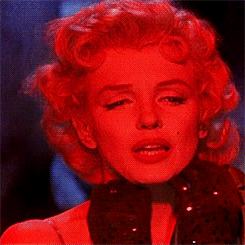Hollywood Auction 89 - 06/2017 - Profiles In History
/http%3A%2F%2Fstorage.canalblog.com%2F27%2F62%2F312561%2F119032541_o.jpg)
/image%2F1211268%2F20240315%2Fob_782fd3_banner-mm-2024-03-spring-5.jpg)
/image%2F1211268%2F20240410%2Fob_40c4f9_blog-gif-mm-niagara-1-3.gif)
Marilyn Monroe
1926 - 1962

Norma Jeane Mortenson
Norma Jeane Baker
Norma Jeane Dougherty
Marilyn Monroe
Marilyn DiMaggio
Marilyn Miller
Jean Norman
Mona Monroe
Zelda Zonk
/image%2F1211268%2F20240410%2Fob_9f471d_blog-gif-mm-syi-1.gif)
/http%3A%2F%2Fstorage.canalblog.com%2F27%2F62%2F312561%2F119032541_o.jpg)
/http%3A%2F%2Fstorage.canalblog.com%2F71%2F03%2F312561%2F89940594_o.jpg)
/http%3A%2F%2Fstorage.canalblog.com%2F98%2F77%2F312561%2F132594147_o.jpg)
/https%3A%2F%2Fstorage.canalblog.com%2F42%2F31%2F312561%2F128785837_o.jpg)
/http%3A%2F%2Fstorage.canalblog.com%2F64%2F39%2F312561%2F49705330_o.jpg)
Blog - The Marilyn Report
Blog - The Marilyn Archive
Blog - Tara Hanks
Mesmerizing Marilyn Monroe
Marilyn From the 22nd Row
Collection Greg Schreiner
Collection Scott Fortner
Collection Peter Schnug
Marilyn Geek
Fan Club The Marilyn Remembered
Blog - MM Books
Blog - Marilyn Monroe Animated Gifs
Instagram Official Marilyn Monroe
Instagram - Silver Technicolor
Instagram - Marilynraresig
Tumblr - The Marilyn Monroe Visual Vault
Tumblr - Infinite Marilyn
Tumblr - Always Marilyn Monroe
Tumblr - Marilyn in High Quality
Tumblr - Marilyn Monroe Archive
Tumblr - Our Girl Marilyn
Perfectly Marilyn Monroe
Crazy For Marilyn
Crazy For You
Crazy For You 2
/image%2F1211268%2F20240229%2Fob_66f2c6_tag-mm-public-martin-lewis-show-1.png)
La presse
Blog - Marilyn Cover Girl
Blog - La MM que j'aime
Magazines - Famous Fix
Magazines - Pinterest Lorraine Funke
Archives presse USA - Newspapers
Archives presse Australia - Trove
Archives presse - Internet Archive
Archives presse - Lantern
Archives presse - Media History Digital Library
Archives - Gallica BNF
Archives magazines - Magazine Art
LIFE photo archive
LIFE magazines
LIFE articles
Collier's - Unz Review
Esquire Classic
Bravo Posters
Paris Match
/image%2F1211268%2F20240410%2Fob_07cb4a_blog-gif-mm-stern-1.gif)
Agence Photos
Magnum
Getty images
mptv images
Keystone
profimedia
ullstein bild
Redux Pictures
Roger Viollet
Shutterstock
topfoto
picryl
iStock by Getty
Bridgeman images
AP Images
Album
Photographes
All About Photo
Listing Photographes du XXeme
Allan Grant
Bernard of Hollywood - instagram
Bert Stern
Bill Ray
Bob Willoughby
Carl Perutz
Douglas Kirkland - website
Douglas Kirkland - instagram
Elliott Erwitt - website
Elliott Erwitt - instagram
Ernst Haas
Eve Arnold - website
Eve Arnold - instagram
George Barris - website
George Barris - instagram
Harold Lloyd
Henri Dauman
Jock Carroll
Lawrence Schiller
Leigh Wiener
Nickolas Muray
Phil Stern
Philippe Halsman - website
Philippe Halsman - instagram
Richard Avedon - website
Richard Avedon - instagram
Sam Shaw - website
Sam Shaw - instagram
Weegee Arthur Fellig
Milton H Greene
Milton H Greene - website
Milton H Greene - instagram
MHG The Archives Licensing
The archives LLC - tumblr
/image%2F1211268%2F20240229%2Fob_143453_blog-gif-video.gif)
Video Archives
INA
British Pathé
ITN Archive
Paramount & Pathé Newsreel
/image%2F1211268%2F20240301%2Fob_735dec_blog-liens-culture.jpg)
Culture
aenigma
The Blonde at the Film
Tumblr - Weirland TV
Dr Macro's HQ scans
Pulp International
Stirred Straight Up

Sites communautés
Irish Marilyn Monroe Fan Club
listal
The Place
Who's Dated Who
Films - imdb
Films - Classic Movie Hub
Bio - Wikipedia fr
Dossiers - FBI Records
/image%2F1211268%2F20240302%2Fob_e11252_blog-liens-friends-jane.gif)
Marilyn Friends
Mona Rae Miracle
Joe DIMaggio
Arthur Miller
Yves Montand
Montgomery Clift
Clark Gable
Marlon Brando
Jane Russell
Rock Hudson
Dean Martin
Frank Sinatra
Ava Gardner
Ralph Roberts
George Fisher
Joan Crawford
Jeanne Carmen
Travilla Style - blog
The Actors Studio
